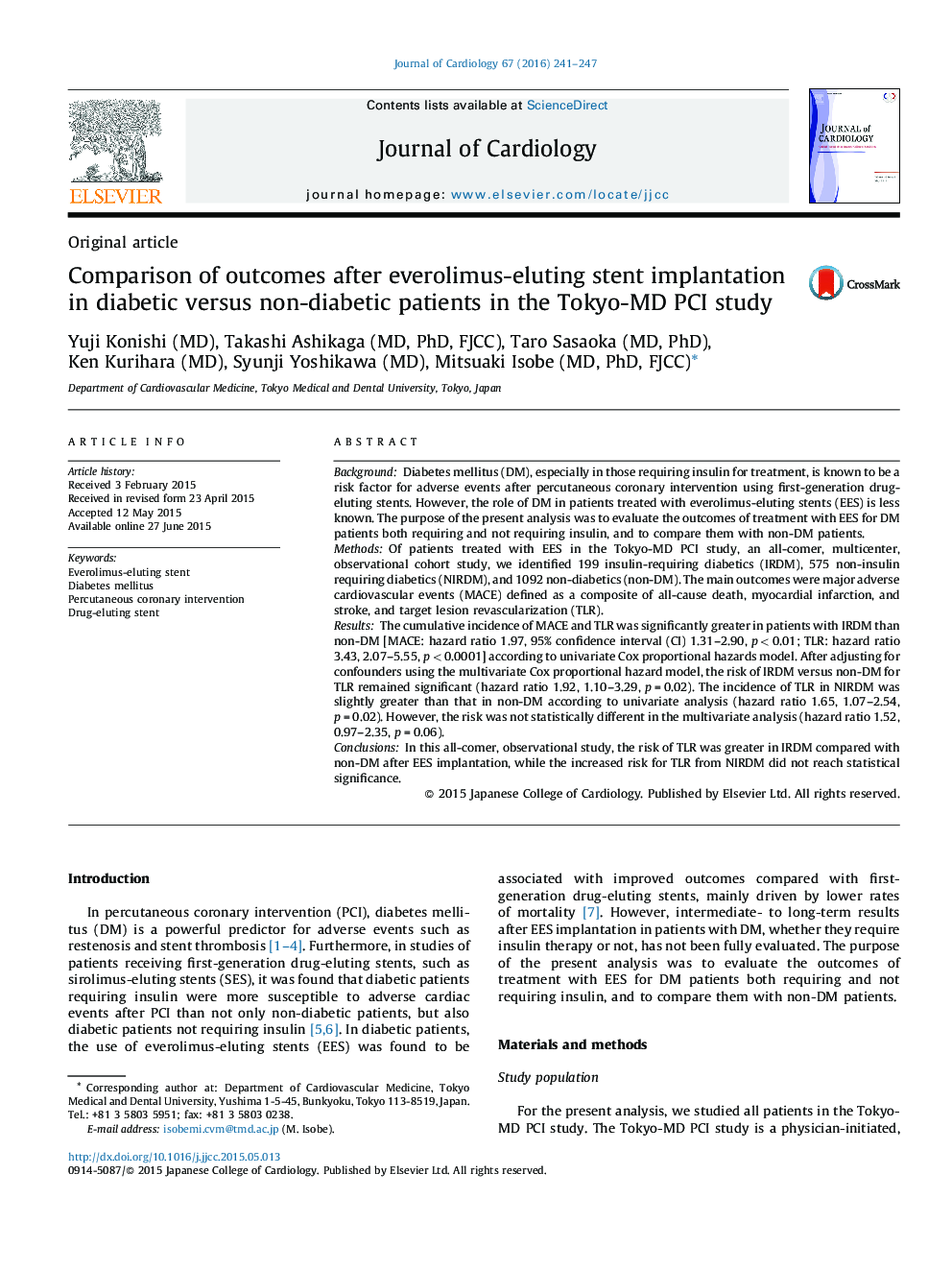| Article ID | Journal | Published Year | Pages | File Type |
|---|---|---|---|---|
| 2962735 | Journal of Cardiology | 2016 | 7 Pages |
BackgroundDiabetes mellitus (DM), especially in those requiring insulin for treatment, is known to be a risk factor for adverse events after percutaneous coronary intervention using first-generation drug-eluting stents. However, the role of DM in patients treated with everolimus-eluting stents (EES) is less known. The purpose of the present analysis was to evaluate the outcomes of treatment with EES for DM patients both requiring and not requiring insulin, and to compare them with non-DM patients.MethodsOf patients treated with EES in the Tokyo-MD PCI study, an all-comer, multicenter, observational cohort study, we identified 199 insulin-requiring diabetics (IRDM), 575 non-insulin requiring diabetics (NIRDM), and 1092 non-diabetics (non-DM). The main outcomes were major adverse cardiovascular events (MACE) defined as a composite of all-cause death, myocardial infarction, and stroke, and target lesion revascularization (TLR).ResultsThe cumulative incidence of MACE and TLR was significantly greater in patients with IRDM than non-DM [MACE: hazard ratio 1.97, 95% confidence interval (CI) 1.31–2.90, p < 0.01; TLR: hazard ratio 3.43, 2.07–5.55, p < 0.0001] according to univariate Cox proportional hazards model. After adjusting for confounders using the multivariate Cox proportional hazard model, the risk of IRDM versus non-DM for TLR remained significant (hazard ratio 1.92, 1.10–3.29, p = 0.02). The incidence of TLR in NIRDM was slightly greater than that in non-DM according to univariate analysis (hazard ratio 1.65, 1.07–2.54, p = 0.02). However, the risk was not statistically different in the multivariate analysis (hazard ratio 1.52, 0.97–2.35, p = 0.06).ConclusionsIn this all-comer, observational study, the risk of TLR was greater in IRDM compared with non-DM after EES implantation, while the increased risk for TLR from NIRDM did not reach statistical significance.
